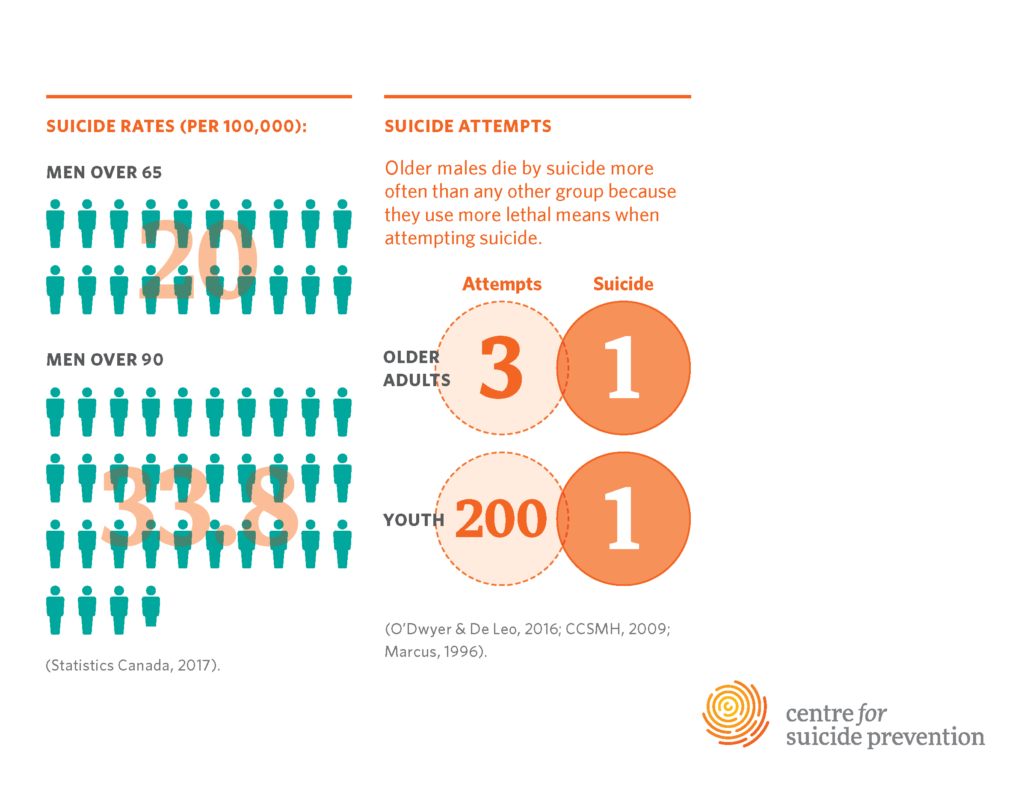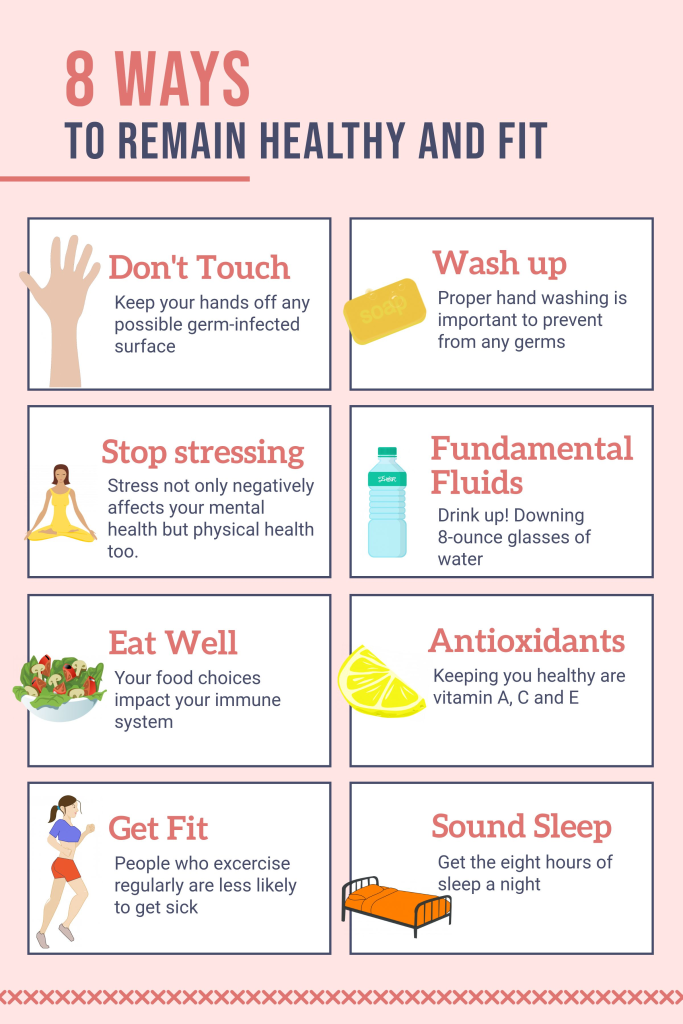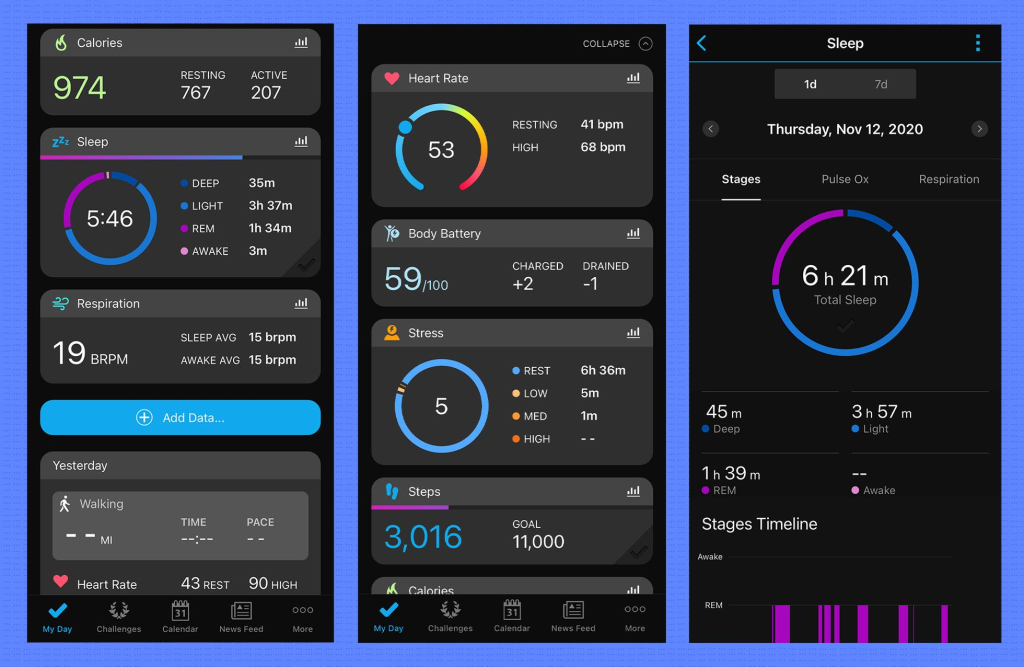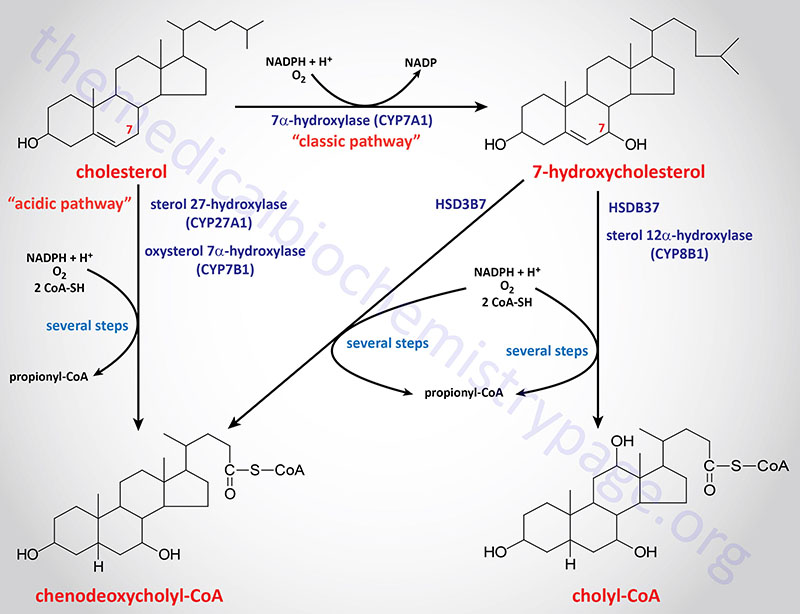Suicide prevention for older adults is a critical area that demands urgent attention, especially considering that individuals aged 75 and over have the highest suicide rates of any age demographic. Despite this alarming statistic, many national organizations fail to provide adequate mental health resources specifically designed for this vulnerable population. A recent study published in The American Journal of Geriatric Psychiatry highlights a worrying imbalance in the focus of existing online suicide prevention efforts, pointing to a significant lack of accessible support for seniors. Older adults frequently turn to the internet for information, yet they often encounter scarce resources tailored to their unique needs. To tackle this pressing issue, it’s essential to advocate for targeted suicide prevention resources that not only address the specific challenges faced by older individuals but also utilize platforms they are likely to engage with, ensuring that help is readily available when it is most needed.
The challenge of preventing self-harm among seniors is becoming increasingly pronounced as demographic shifts lead to a rise in the aging population. Many older adults experience factors such as social isolation, which can elevate their risk for suicidal thoughts and actions. As awareness grows around geriatric psychiatric care, it’s key to seek alternative support systems, including online networks where seniors can find community and assistance. By creating tailored mental health initiatives, we can better address the emotional turmoil that often accompanies aging, including loneliness and depression. It is crucial to foster an environment where older adults can access relevant suicide prevention resources and feel empowered to reach out for help.
The Alarming Rise of Suicide Rates Among Older Adults
Suicide rates among older adults, particularly those aged 75 and above, are significantly higher than in any other age demographic. Current statistics indicate that this age group faces a suicide rate of 20.3 per 100,000 individuals, a figure alarming in its implications for public health and mental health services. This rise in suicide rates can be linked to a myriad of factors including social isolation, chronic health conditions, and a lack of adequate mental health resources tailored to the unique needs of seniors. As we delve deeper into this topic, the emphasis on understanding and addressing the intricate dynamics of geriatric mental health becomes crucial.
Moreover, the prevailing stigma surrounding mental health in older adults often results in underreporting and misunderstanding of suicidal ideation within this population. Many seniors may feel reluctant to seek help due to fears of being a burden or the perception that they are weaker than younger individuals facing similar struggles. This societal perception only heightens the urgency for tailored suicide prevention resources that specifically address the challenges faced by older individuals. With the increasing trend of aging populations, it is imperative for healthcare systems to prioritize the mental well-being of older adults.
The Unmet Needs in Suicide Prevention Resources for Seniors
Recent studies, particularly one led by researchers at McLean Hospital, have shed light on the stark imbalance in suicide prevention resources available to older adults. Despite the recognition of the high suicide rates among this group, national organizations often overlook their specific needs, offering few accessible tools for support. This discrepancy highlights a significant barrier not only to obtaining critical help but also to fostering an environment where older adults feel safe discussing their mental health concerns. The need for dedicated suicide prevention resources for this demographic has never been more evident.
Geriatric psychiatry emphasizes the necessity of understanding how older adults search for and access mental health support online. The research conducted at McLean revealed that while older individuals increasingly turn to the internet for health information, the resources they find are inadequate. Most materials available do not cater to their unique experiences, leading to a vital gap in psychiatric care for seniors. Tackling this issue requires a concerted effort from both clinicians and online platforms to ensure that informative and supportive resources are readily available to those who need them.
Online Support Platforms: Bridging the Gap for Older Adults
As technology continues to evolve, online support for seniors has emerged as a potential lifeline for those at risk of suicide. The convenience and anonymity that online platforms offer can encourage older adults to seek help without the stigma often associated with mental health discussions. However, the current landscape shows a pressing need for platforms specifically designed to address the challenges faced by seniors. This includes incorporating more age-appropriate content and ensuring that these platforms are easy to navigate for older users.
Creating effective online support platforms also means ensuring these resources are integrated with existing mental health services. For instance, having a virtual connection to geriatric psychiatry professionals, counseling, and peer-support groups could significantly enhance the effectiveness of online suicide prevention efforts. As more older adults engage with digital resources, the importance of developing tailored online supports cannot be overstated, especially in providing a supportive, inclusive environment for seniors to share their experiences and seek assistance.
The Role of Social Connection in Preventing Suicide
Social isolation stands as a leading factor contributing to the heightened risk of suicide among older adults. Many seniors live alone, face the loss of loved ones, or experience declining physical health, which can exacerbate feelings of loneliness and despair. Given that social connections are crucial to mental health, fostering community and encouraging friendships can play a transformative role in suicide prevention for older adults. Initiatives aimed at enhancing social engagement, such as community gatherings, volunteer programs, or online forums, provide invaluable support networks for seniors.
Moreover, intergenerational programming can be particularly beneficial in bridging the gap between younger and older populations. These programs not only instill a sense of purpose and belonging among seniors but also promote understanding and empathy within younger generations. By nurturing these connections, we can help combat the pervasive loneliness many older adults face and create a safety net that can decrease their risk of suicide. Ultimately, enhancing social support is an effective and essential component in suicide prevention strategies for older populations.
Addressing Systemic Issues in Mental Health Care for Seniors
The systemic biases against older adults within the mental health care system contribute significantly to their vulnerability to suicide. Often, this population is underrepresented in mental health research, leading to a lack of tailored interventions that meet their specific needs. It is vital for mental health professionals to advocate for more inclusive research practices that not only consider older adults but actively incorporate their perspectives and experiences into the development of treatment programs. This change is crucial for creating effective, evidence-based approaches to geriatric psychiatric care.
Moreover, increasing funding for mental health initiatives focused on older adults is necessary to bring about systemic change. Without adequate financial resources, programs designed to address senior mental health issues will continue to be limited in their reach and effectiveness. Policymakers must recognize the growing challenges faced by an aging population and allocate funds towards comprehensive suicide prevention resources that prioritize accessible support and care for seniors. Ensuring that older adults receive the mental health support they need is not just a public health imperative but also a moral obligation.
The Importance of Tailored Suicide Prevention Campaigns
Public-facing suicide prevention campaigns have proven effective in various demographics but have notably failed to cater to older audiences. The unique circumstances and challenges faced by seniors necessitate specialized approaches that consider their life experiences. These campaigns should be designed with an understanding of the specific risk factors attributable to the older population, such as grief, chronic illness, and isolation. By implementing targeted outreach efforts, we can create a greater awareness of the resources available for older adults at risk of suicide.
Additionally, breaking down barriers related to stigma and promoting mental health literacy among older adults are essential components of effective suicide prevention campaigns. Incorporating stories, experiences, and testimonials from older individuals who have navigated mental health challenges can foster an atmosphere of openness and solidarity. Campaigns that resonate on a personal level can empower seniors to seek help, utilizing available suicide prevention resources that truly address their needs.
The Need for Collaborative Efforts in Mental Health Care
Collaboration across various sectors of healthcare is crucial for addressing the mental health crises that older adults face today. Integrating geriatric psychiatry with primary care and community services ensures a holistic approach to mental well-being. By working together, healthcare professionals can more effectively identify at-risk seniors and provide them with tailored resources and support networks, whether they are online or within community settings. This collaborative model allows for early intervention and comprehensive care planning.
Moreover, engaging with stakeholders, including caregivers, families, and nonprofit organizations, is essential in developing a multifaceted suicide prevention strategy for older adults. These entities can provide valuable insights into the challenges that seniors encounter, helping to create roads for outreach that might otherwise be overlooked. Fostering these partnerships is vital to building a supportive infrastructure that prioritizes the mental health needs of older adults and mitigates their risk of suicide.
Technological Innovations: Enhancing Access to Mental Health Resources
In our increasingly digital world, technology presents unique opportunities to enhance access to mental health resources for older adults. Telehealth services, online counseling sessions, and mobile mental health apps have emerged as viable options for seniors seeking support. These innovations not only remove barriers related to mobility but also cater to those reluctant or unable to seek help in-person. By expanding the availability of mental health resources through technology, we can ensure seniors have the tools they need to address their mental health concerns.
However, it is imperative to ensure that such technologies are user-friendly and designed with older adults in mind. This includes simplifying interfaces, providing clear instructions, and ensuring accessibility features are included. Furthermore, education and training on utilizing these resources play a key role in their adoption. As seniors become more comfortable navigating digital platforms, their access to vital mental health support will significantly improve, aiding in preventative measures against suicide.
Enhancing Awareness and Education Among Older Adults
Increasing awareness and education surrounding mental health is a vital aspect of suicide prevention for older adults. By equipping seniors with knowledge about mental health issues and available resources, we empower them to recognize warning signs in themselves and others. Educational programs that inform seniors about the importance of mental health and the effectiveness of available treatment can diminish feelings of isolation and hopelessness that often accompany suicidal thoughts. This proactive approach is essential in fostering a culture of support and openness.
Additionally, incorporating discussions about mental health into community centers or groups frequented by older adults can normalize these conversations and reduce stigma. Encouraging peer-to-peer dialogue can be particularly effective, as it creates relatable platforms for seniors to express their feelings and discuss challenges. These initiatives are crucial for building a network of understanding and compassion that not only raises awareness but actively works to prevent suicide among older adults.
Frequently Asked Questions
What are the key suicide prevention resources for older adults?
Suicide prevention resources for older adults include tailored hotlines, community mental health services, and online platforms specifically designed for seniors. Organizations like the National Institute of Mental Health offer specialized guidance, while local geriatric psychiatry clinics provide valuable support and counseling services.
Why are older adults at higher risk for suicide?
Older adults, particularly those aged 75 and above, are at higher risk for suicide due to factors like social isolation, chronic health issues, and mental health challenges. These risks highlight the need for targeted suicide prevention efforts and mental health resources aimed specifically at this demographic.
How can online support for seniors help in suicide prevention?
Online support for seniors can play a crucial role in suicide prevention by providing a platform for older adults to connect with peers, access mental health resources, and receive counseling remotely. These resources help mitigate feelings of isolation and promote mental well-being among older adults.
What role does geriatric psychiatry play in suicide prevention for older adults?
Geriatric psychiatry specializes in addressing the mental health needs of older adults, making it essential in suicide prevention efforts. Professionals in this field can diagnose and treat mental health disorders, provide therapy, and recommend resources specifically designed to help older adults at risk of suicide.
How does the rise in older adults’ suicide rates correlate with research and resources?
The rise in suicide rates among older adults has outpaced research and available mental health resources. Limited studies specifically addressing this demographic’s needs result in a scarcity of effective suicide prevention initiatives, underscoring the urgent requirement for targeted resources and funding.
Where can I find mental health resources tailored for older adults?
Mental health resources tailored for older adults can be found through government websites, local health departments, and organizations such as the National Institute on Aging. These platforms often provide information about counseling, support groups, and suicide prevention resources specifically for seniors.
What are some effective suicide prevention campaigns for older adults?
Effective suicide prevention campaigns for older adults include awareness programs that focus on recognizing signs of distress, social engagement initiatives, and outreach through senior centers. Tailoring these campaigns to address the specific challenges faced by older adults is crucial for their success.
How can family members support older adults in crisis related to suicide?
Family members can support older adults in crisis by maintaining open lines of communication, encouraging them to seek professional help, and providing information about suicide prevention resources. Additionally, being present and actively listening without judgment can help alleviate feelings of isolation.
Are there specific online tools for suicide prevention geared towards senior citizens?
Yes, many organizations offer online tools designed for senior citizens, such as support groups, chat services, and mental health resource directories. Websites focusing on geriatric care often have tailored content addressing the unique mental health challenges faced by older adults.
What should be included in suicide prevention strategies for older adults?
Suicide prevention strategies for older adults should include comprehensive mental health assessments, accessible counseling services, community engagement programs, and initiatives to reduce social isolation. Additionally, raising awareness about the unique risks faced by older adults is vital in creating effective prevention resources.
| Key Points | Details |
|---|---|
| High Risk Population | Older adults aged 75 and older have the highest suicide rates compared to any other age group. |
| Accessibility of Resources | Existing national suicide prevention organizations do not provide easily accessible resources for older adults. |
| Research Background | The research was conducted at McLean Hospital and published in The American Journal of Geriatric Psychiatry. |
| Identified Issues | Older adults experience social isolation and loneliness, contributing to the rise in suicide rates. |
| Recommendations | There is a need for tailored suicide prevention campaigns and increased funding for research directly addressing the needs of older adults. |
Summary
Suicide prevention for older adults is an urgent and critical need in our society today. Research has demonstrated that older adults, particularly those aged 75 and older, are at the highest risk for suicide yet have limited access to specialized resources. Addressing this issue requires dedicated efforts to develop tailored suicide prevention programs that meet the unique health and social needs of older adults. It is essential for organizations to increase awareness and improve the availability of support tailored to this demographic to effectively combat this growing crisis.



